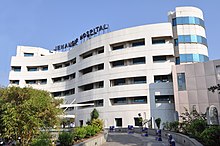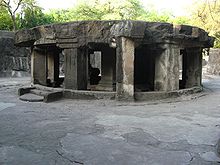Events Agency in Pune
At Fulcrum, we truly value our clients and believe in open and honest communication, and top-notch customer service. We will take care of your event staffing and management needs, from start to finish, so you can focus on the bigger picture. We’re here to help you reach your event goals.

OUR PEOPLE POWER YOUR PROMOTIONAL EVENT
Building Your Brand
With thorough product training, our brand ambassadors and product specialists become an extension of your brand.
Engaging Consumers
We create conversations that engage consumers with your brand and ultimately drive purchasing decisions.
Our people power your events!
Let us do the heavy lifting at your events, while your customers receive the ultimate experience.
Fulcrum is an event staffing agency that is deeply passionate about building people, partnerships and brand experiences. At Fulcrum, we believe in developing scalable, strategic alliances.
Fulcrum partners with national agencies & corporations on event staffing and executing events, large & small, for a multitude of brands in nationally. We are proud to be headquartered in beautiful Mumbai, with several satellite offices around the country, including in Pune, Delhi and Tier-2 City. Fulcrum is passionate about our people, both in our corporate office as well as in the field.

Permissions
We take care of all permissions required to make your activation seamless
Planning & Strategy
Due to our years of experience, we can provide real insights into the best times/venues & planning options for your Brand Campaign to yield its best results (in terms of sales/consumer engagements and increase of sales).
Experiential Concepts
With our love & passion for positive consumer engagements, we have ideas & concepts that can help bring your brand campaign to life. These concepts can and affect positive change/plus yield results that are notable & impressive
Merchandising & Uniforms
With Fulcrum as your partner, you never have to worry about any of the details. With our wide range of suppliers we can provide ideas and source uniform & branded items (merchandising) options effortlessly for your brand campaign.

Mission
Our mission is to grow Fulcrum’ leadership position in experiential marketing, event staffing and execution by continuing to pioneer the evolution of our industry by breaking barriers of perceived limitations. This is actualized through revolutionary steps in communications, system and innovation, and through creating impactful entrepreneurial partnerships with our clients, team members, talent and strategic alliances. We will stay true to our Local Reach philosophy while giving back to our community.
Daily Purpose
T build long-lasting, meaningful relationships by delivering world-class brand experiences and by exceeding expectations as a leading event staffing agency.
Core Values
Faith and perseverance
Do the right thing
Win as a team
Bring out the best in people
BRAND AMBASSADORS
EVENT STAFFING
PROMOTIONAL MODELS
PROMOTIONAL STAFFING
TRADE SHOW STAFFING
AUTO SHOW STAFF
BRAND ACTIVATIONS
PRODUCT DEMONSTRATORS
PRODUCT SAMPLING EVENTS
RETAIL AND IN-STORE MARKETING
ENTERTAINMENT MARKETING
EVENT EMCEES AND DJS
EVENT HOSTS AND PRESENTERS
EVENT MARKETING STAFF
EXPERIENTIAL MARKETING STAFF
FESTIVAL MARKETING
FOOD AND BEVERAGE SAMPLING
GUERRILLA MARKETING
LEAD GENERATION STAFF
MOBILE MARKETING TOURS
POP-UP EVENTS
CAMPUS MARKETING
CONVENTION STAFFING
CORPORATE EVENT STAFF
COSTUME CHARACTERS AND MASCOTS
Let us help you plan and execute a great marketing strategy.
Send Us Your Requirements Contact Form
PUNE
PUNE
Pune, is the second largest city in the state of Maharashtra and the seventh most populous city in India, with an estimated population of 7.4 million as of 2020.[23] It has been ranked as “the most livable city in India” several times.[24] Along with the municipal corporation limits of PCMC and the three cantonment towns of Camp, Khadki and Dehu Road, Pune forms the urban core of the eponymous Pune Metropolitan Region (PMR).[25]
According to the 2011 census the urban area had a combined population of 5.05 million whilst the population of the metropolitan region was estimated at 7.4 million.[9] Situated 560 metres (1,837 feet) above sea level on the Deccan plateau on the right bank of the Mutha river,[26] Pune is also the administrative headquarters of its namesake district.The largest city of Maharashtra, Pune contributes a GDP(PPP) of $78 billion.
HISTORY
Pune was part of the Jagir (fiefdom) granted to Maloji Bhosale in 1599 for his services to the Nizamshahi (Ahmadnagar Sultanate).[39] Pune was ruled by the Ahmadnagar Sultanate until it was annexed by the Mughals in the 17th century. Maloji Bhosale’s grandson, Chhatrapati Shivaji Maharaj, the founder of the Maratha Empire, was born at the fort of Shivneri, about 90 km from Pune.[40] It changed hands several times between the Mughals and the Marathas in the period 1680 to 1705.
After the destruction of the town in raids by the Adil Shahi dynasty in 1630 and again between 1636 and 1647, Dadoji Konddeo, the successor to Dhadphale, oversaw the reconstruction of the town. He stabilised the revenue collection and administrative systems of the areas around Pune and the neighbouring Maval region. He also developed effective methods to manage disputes and to enforce law and order.[41] The Lal Mahal was commissioned in 1631 and construction was completed in 1640 AD.
GEOGRAPHY
Pune is situated at approximately 18° 32″ north latitude and 73° 51″ east longitude. The city’s total area is 15.642 sq. km.[80] By road Pune is 1,173 km (729 mi) south of Delhi, 734 km (456 mi) north of Bangalore, 570 km (350 mi) north-west of Hyderabad and 149 km (93 mi) south-east of Mumbai.
Pune lies on the western margin of the Deccan plateau, at an altitude of 560 m (1,840 ft) above sea level. It is on the leeward side of the Sahyadri mountain range, which forms a barrier from the Arabian Sea. It is a hilly city, with Vetal Hill rising to 800 m (2,600 ft) above sea level. The Sinhagad fort is at an altitude of 1,300 metres (4,300 feet).
The old city of Pune is at the confluence of the Mula and Mutha rivers. The Pavana, a tributary of Mula river and Indrayani river, a tributary of the Bhima river, traverse the northwest suburbs of Pune.
ECONOMY
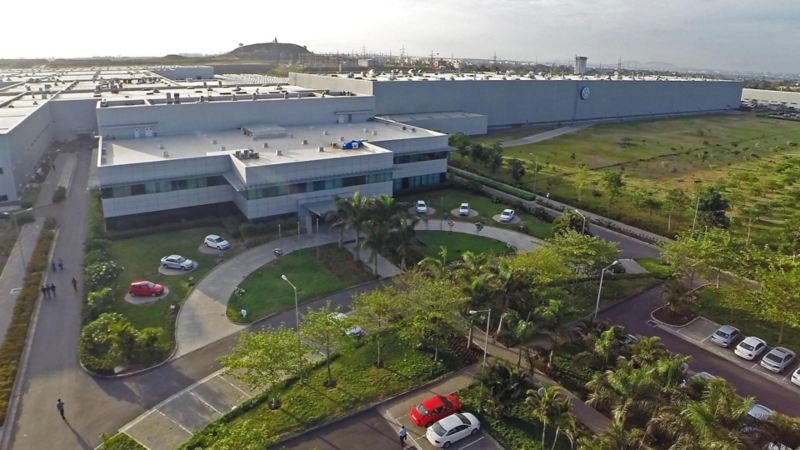
The second largest city of Maharashtra, Pune contributes a GDP(PPP) of $48 billion.[22] Pune has the fifth largest metropolitan economy and the sixth highest per capita income in the country.[129][130] The key sectors of the local economy are education, manufacturing and information technology (IT). Pune has historically been known as a center for higher education and has been referred to as the educational capital of India. In 2016, it was reported that nearly 500,000 students from across India and abroad study in Pune at nine universities and more than a hundred educational institutes.[131][132] It is known as Industrial powerhouse of Maharashtra. The city is widely known for its IT and manufacturing industries. Industrial areas are developed in Pimpri-Chinchwad, Chakan, Indapur, Ranjangaon etc.
It serves as headuqarters to Kirloskar Group, Bajaj Auto, Serum Institute of India, Tata BlueScope Steel, Bharat Forge, Kalyani Group, Tata Steel Processing and Distribution etc. Public sector undertakings such as Hindustan Antibiotics, Maharashtra State Agri and Rural Tourism Co-operative Federation Limited, Pune Mahanagar Parivahan Mahamandal Limited are based in the city. Pune is a major manufacturing and industrial hub. It has established industries in the fields of automobile, ekectronics & hardware, aerospace, pharmaceuticals, locomotives etc.
pune DISTRICT'S
The eighth largest metropolises in India, Pune is located in the state of Maharashtra. It is the second largest city in the state after Mumbai, and is an important city in terms of its economical and industrial growth. Once the hometown of Marathas and a centre of power for the Maratha Empire, the presence of the numerous edifices in Pune links to its rich and glorious past. The city leads as the ‘veritable heartland’ of cultural Maharashtra. Pune also has made its mark as the educational epicenter winning itself the sobriquet, ‘The Oxford of the East’. Not just that, it has a growing industrial hinterland, with information technology, engineering and automotive companies sprouting. The city is known for cultural activities like classical music, spirituality, theatre, sports, and literature. Pune is a pleasant travel getaway destination to spend a quiet holiday.

more info
Pune Municipal Corporation (PMC) is the civic body responsible for local government. It comprises two branches, the executive branch headed by the Municipal Commissioner, an IAS officer appointed by the Government of Maharashtra, and an elected deliberative branch, the general body, headed by the Mayor of Pune.[180] Municipal elections are held every five years to elect councillors, commonly known as “corporators”, who form the general body. The current general body of the PMC elected in February 2017 has 162 corporators representing 41 multi-member wards (39 with 4 corporators each and 2 with 3 each).[181] The general body, in turn, elects the mayor and the deputy mayor.
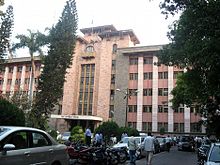
demographics
The city has a population of 3,124,458; while 5,057,709 people reside in the Pune Urban Agglomeration as of the 2011 census.[106] The latter was c. 4,485,000 in 2005. According to the Pune Municipal Corporation (PMC), 40% of the population lived in slums in 2001.[107]
Since Pune is a major industrial metropolis, it has attracted migrants from all parts of India. The number of people migrating to Pune rose from 43,900 in 2001 to 88,200 in 2005.[108] The sharp increase in population during the decade 1991–2001 led to the absorption of 38 fringe villages into the city.[109] The top five source areas of migrants are Karnataka, Uttar Pradesh, Andhra Pradesh, Gujarat, and Rajasthan. The Sindhis in the city are mostly refugees and their descendants, who came to the area after the partition of India in 1947. Initially they settled in the Pimpri area, which is still home to a large number of Sindhi people. However, they are also present in other parts of the city. As agriculture has dwindled in recent decades, immigration of the erstwhile rural peoples now accounts for 70 percent of the population growth.
| Pune population | |||
|---|---|---|---|
| Census | Population | %± | |
| 1901 | 153,320 | — | |
| 1951 | 488,419 | — | |
| 1971 | 856,105 | — | |
| 1981 | 1,203,351 | 40.6% | |
| 1991 | 1,566,651 | 30.2% | |
| 2001 | 2,540,069 | 62.1% | |
| 2011 | 3,124,458 | 23.0% | |
transport
Pune Suburban Railway (electric multiple units) (popularly called local trains) connect Pune to the industrial city of Pimpri-Chinchwad and the hill station of Lonavala. Daily express trains connect Pune to Mumbai, Nashik, Ahmedabad, Chennai, Delhi, Hyderabad, Nanded, Jaipur, Raipur, Nagpur, Visakhapatnam, Thiruvananthapuram, Kochi, Coimbatore, Bangalore, Allahabad, Kanpur, Howrah, Jammu Tawi, Vijayawada, Darbhanga, Goa, Gwalior, Varanasi, Bhubaneswar, Ranchi, Patna, and Jamshedpur. At Pune, there is a diesel locomotive shed and an electric trip shed.[227] Pune Railway Station is administered by the Pune Railway Division of Central Railways.
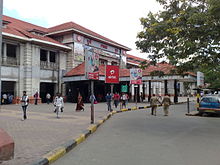
bus
Public buses within the city and its suburbs are operated by Pune Mahanagar Parivahan Mahamandal Limited (PMPML). PMPML operates the Rainbow BRTS system, the first of its kind in India, in which dedicated bus lanes were supposed to allow buses to travel quickly through the city. The project has turned out to be a failure, receiving little patronage from the local citizenry.[229] Maharashtra State Road Transport Corporation runs buses from stations in Wakdewadi, Pune station, and Swargate to all major cities and towns in Maharashtra and neighbouring states.
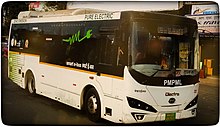
AIRPORT
Pune International Airport at Lohegaon is one of the busiest airports in India. The airport is operated by the Airports Authority of India. It shares its runways with the neighbouring Indian Air Force base. In addition to domestic flights to all major Indian cities, the airport has international direct flights to Dubai, operated by Air India Express, and SpiceJet. Pune International Airport at Lohegaon was ranked third best in the category of 5-15 million passengers by Airport Service Quality
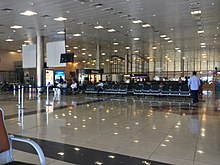
RESEDENTIAL AREAS
BLANK MAM

market yard
Market Yard is a marketplace in the city of Pune. It is known for wholesale of the vegetables, fruits & flowers.
Market Yard was shifted originally from ‘khalchi mandai’ from the peth area in Pune in order to expand the vegetable and fruit supply throughout the Pune City.
It was in 1980, when the then chief minister Sharad Pawar shifted the APMC market from mandai in Budhwar peth to the existing Market Yard at Gultekdi. This was carried out under the guidance and efforts of Late. Murlidhar Pandharinath Ghule, a trader in the old APMC market.

SHOPPING MALL
Phoenix Market City is a shopping mall developed by Phoenix Mills Limited, located in Pune, Maharashtra. It was opened in January 2011[1] and is one of the largest malls in India, with a retail area of 1.19 million square feet.[2] It is located in the Vimannagar area of Pune.[3]
Phoenix Market City has four floors of retail space and several features such as a retail zone, a food court with fine dining restaurants and quick service restaurants and a nine-screen PVR Cinemas.
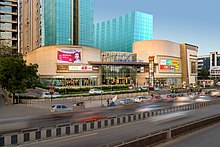
MOVIE THREATERS
The Bal Gandharva Ranga Mandir is a drama theatre with an auditorium and exhibition hall located in Shivajinagar area of Pune, India. It is named after Marathi singer and stage actor, Bal Gandharva.
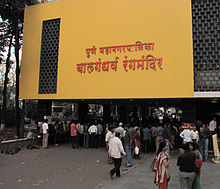
PARKs
Just 2 km from the Pune Railway Station lies this popular retreat for people of all ages. The gardens are situated next to Fitzgerald Bridge and take their name from the bund, or dam, on the Mula river.

HOSPITALS
Jehangir Hospital is a 350-bed hospital in Pune, Maharashtra, India. Sir Cowasji Jehangir and Lady Hirabai Jehangir founded the hospital on 6 February 1946.
The Jehangir Nursing Home was set by Sir Cowasji and Lady Hirabai who donated the land to start the hospital. The villa was called Ready Money Villa but they named it after their son Jehangir who passed away that year. The hospital began with 8 beds and Eduljee H Coyaji[3] was asked to helm Pune city’s first private hospital in May 1946.
